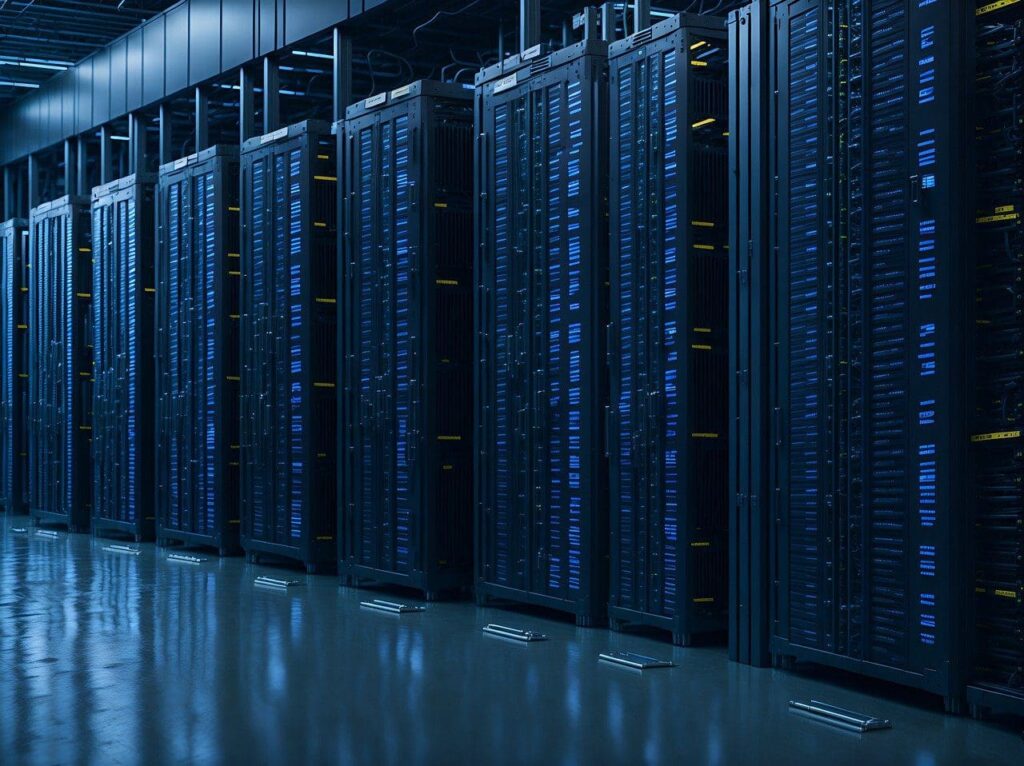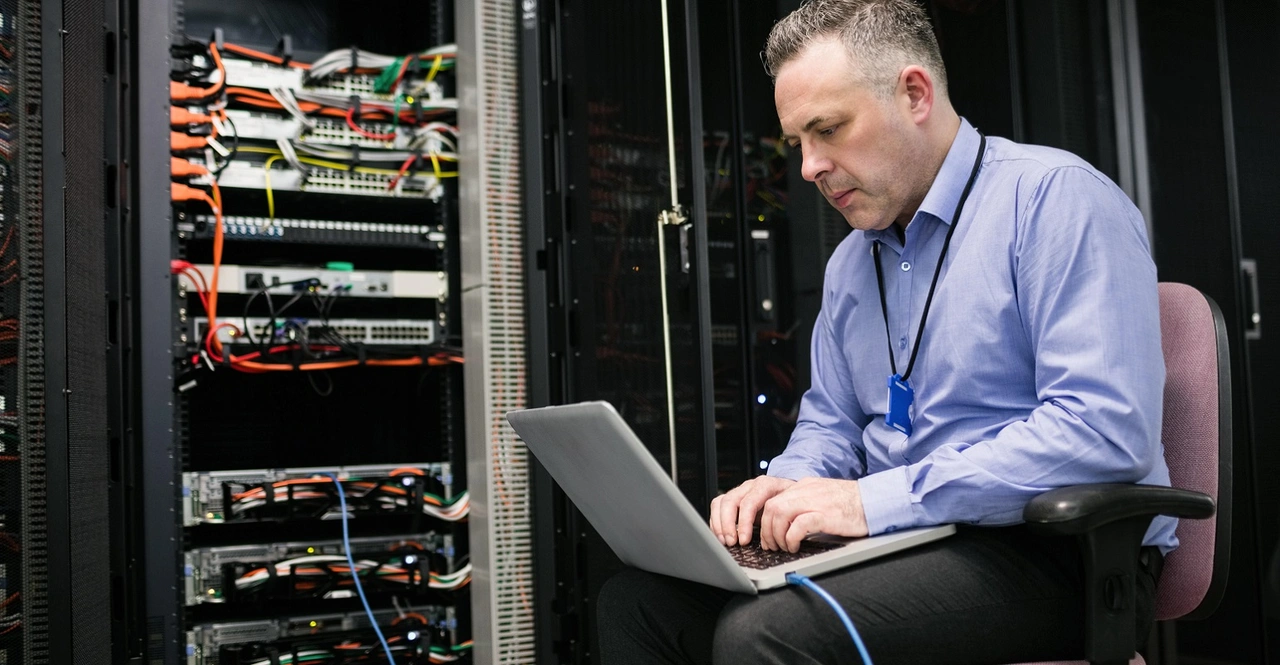Working in tech industry and digital corporations, we all know that a data center is the backbone of any operation you dare to call “online”. Without organized data and safe processes, it’s nearly impossible to go over business details and make decisions based upon them. The thing is, no matter the scale of your business, you’ll depend on data centers and servers.
But what is a “server room”? a server room is smaller than a data center, and the two serve different purposes. A server room typically houses a small number of servers and networking equipment, often supporting the needs of a single office or small business. It is designed with basic environmental controls like air conditioning but lacks the scalability and advanced infrastructure of a data center. Here are the key differences between the two concepts in Danacloud, and how you can decide which one to choose.
Here’s a table summarizing the key differences and considerations between Server Rooms and Data Centers, as well as their respective advantages and disadvantages:
| Category | Server Room | Data Center |
|---|---|---|
| Definition | A small, dedicated space within a building to house servers and related IT equipment. | A large-scale, standalone facility designed to house thousands of servers, networking equipment, and IT systems. |
| Size & Scale | Smaller, typically supports the IT needs of a single organization. | Large-scale facility supporting multiple organizations or cloud providers. |
| Purpose | Manages localized IT tasks like email, file storage, or internal applications. | Supports extensive operations such as cloud computing, big data processing, and global application hosting. |
| Infrastructure | Basic infrastructure (cooling, power supply, and security), typically with limited redundancy. | Advanced infrastructure with redundant power, cooling, and high-level security systems. |
| Location | Usually located within an office building. | Typically located in strategic, remote areas for optimal connectivity and efficiency. |
| Cost & Maintenance | Lower cost, easier to set up and maintain, but lacks scalability. | High initial cost, complex maintenance, and requires dedicated operational staff. |
| Capacity | Limited capacity for growth or handling large data loads. | High scalability for large-scale operations and rapid growth. |
| Security | Basic security measures (e.g., lock doors, access control). | Advanced security (physical, cyber, surveillance systems) to protect data and infrastructure. |
| Reliability | More prone to failure due to limited redundancy and backup. | High reliability due to built-in redundancies and failover systems. |
| Scalability | Limited scalability; expansion often requires significant upgrades. | Highly scalable to accommodate growing data and IT needs. |
| Use Case Example | Small business hosting internal applications and local data storage. | Large enterprises, cloud providers, or organizations with global operations requiring high uptime and performance. |
Advantages & Disadvantages
| Feature | Server Room | Data Center |
|---|---|---|
| Advantages | Cost-Effective: Low setup and maintenance cost. Quick Deployment: Easier and faster to build within office premises. Customizable: Designed to meet specific organizational needs. |
Scalability: Supports growing IT demands with thousands of servers. Reliability: Redundant power, cooling, and internet connectivity ensure uptime. Global Accessibility: Supports global operations and cloud computing. Advanced Security: Includes physical and cybersecurity measures. |
| Disadvantages | Limited Capacity: Cannot handle large-scale data needs or rapid growth. Lower Redundancy: Risk of downtime due to limited backup systems. Basic Security: Lacks the advanced safeguards of data centers. |
High Cost: Requires significant upfront investment and ongoing maintenance. Complex Management: Needs specialized teams for operations. Location Dependence: May cause latency for localized operations due to remote locations. |
Best Fit for Different Business Sizes
| Business Size | Server Room | Data Center |
|---|---|---|
| Small Businesses | Ideal for small companies with basic IT needs and limited growth. Typically handles internal applications and email. | Might be overkill for small businesses, but could be useful for colocation or cloud services for enhanced reliability. |
| Mid-Sized Businesses | Works for businesses with basic IT needs, but might need to upgrade as growth demands increase. | Colocation data centers or outsourced facilities can offer scalability and reliability as business grows. |
| Large Enterprises | Server rooms often inadequate as IT needs and data demands grow. | Essential for global operations, big data analysis, cloud services, and supporting high-traffic applications. |
Server Room vs. Data Center Decision-Making
| Factors | Server Room | Data Center |
|---|---|---|
| Cost | Lower setup and operational costs, suitable for small-scale operations. | High initial investment, but offers better ROI for large-scale needs. |
| Growth Potential | Limited growth potential; often requires costly upgrades. | Highly scalable, designed to handle growing data and infrastructure needs. |
| Security & Reliability | Basic security and redundancy; more susceptible to failures. | Advanced security and redundant systems to ensure uptime and protect data. |
| Speed & Accessibility | Quick to deploy within office space. | Requires time for construction, but designed for global accessibility and minimal latency. |
What is a server room?
A server room is a dedicated space within a building designed to house servers and related equipment that power an organization’s IT infrastructure. It serves as the central hub for managing data, hosting applications, and running essential business operations. Unlike larger data centers, server rooms are smaller and cater to the needs of a single organization or department. They typically include basic cooling systems, fire suppression, and cable management to ensure reliable operation.
For example, a small business might have a server room with several racks of servers to manage their email, customer database, and internal software. While not as complex as a data center, the server room is crucial for maintaining the organization’s digital operations. Proper maintenance, security, and environmental controls are essential to ensure smooth and uninterrupted performance. A well-designed server room supports efficiency and scalability as the organization grows.
Read more: Steps for Effective Data Center Capacity Planning
Key differences between data center and server room
The terms data center and server room are often used interchangeably, but they refer to distinct facilities with different purposes and scales. Here are the key differences:
- Size and Scale:
A server room is smaller, designed to house a few servers and IT equipment for a single organization. A data center is a large-scale facility with thousands of servers, networking equipment, and systems that cater to multiple organizations or cloud providers. - Purpose:
Server rooms primarily handle localized IT needs, such as email, file storage, or internal applications. Data centers support extensive operations like cloud computing, big data processing, and hosting global applications. - Infrastructure:
Data centers include advanced infrastructure such as redundant power supplies, sophisticated cooling systems, and high-level security measures. Server rooms typically have basic setups with limited redundancy and cooling. - Location:
A server room is usually located within an office building. Data centers are standalone facilities strategically placed to optimize connectivity and efficiency. - Cost and Maintenance:
Data centers require substantial investment and dedicated teams for maintenance. Server rooms are more affordable but lack the scalability and robustness of data centers.
For example, a company might have an in-house server room, but they rely on an external data center for hosting their website globally.
Data center vs. server room: the advantages and the disadvantages
Data centers and server rooms each have unique advantages and disadvantages depending on an organization’s needs. Here’s a breakdown:
Advantages of a Data Center
- Scalability: Supports growing IT demands with thousands of servers.
- Reliability: Offers redundancy in power, cooling, and internet connectivity to ensure uptime.
- Advanced Security: Equipped with physical and cyber-security systems.
- Global Accessibility: Often built to support worldwide operations and cloud computing.
Disadvantages of a Data Center
- High Cost: Requires significant upfront investment and ongoing maintenance.
- Complex Management: Needs specialized staff to operate and maintain.
- Location Dependence: Typically located in remote areas, which may cause latency for localized operations.
Advantages of a Server Room
- Cost-Effective: Suitable for small-scale operations with lower setup and maintenance costs.
- Quick Deployment: Easier to build within office premises.
- Customizable: Designed to meet specific organizational needs.
Disadvantages of a Server Room
- Limited Capacity: Can’t handle large-scale data or sudden growth.
- Lower Redundancy: Vulnerable to failures due to limited backup systems.
- Basic Security: Lacks the advanced safeguards of data centers.
For small businesses, a server room may suffice, but larger enterprises benefit from the robustness of a data center.
Read more: Data Center Services
Server Room vs. Data Center: Which is Best for Your Business?
Choosing between a server room and a data center depends on the size and type of your business as well as your operational needs. Here’s how they compare:
Small Businesses
A server room is ideal for small companies with basic IT requirements. These businesses often need limited storage and processing capabilities, making a server room a cost-effective and practical choice. For example, a local accounting firm might host their financial software on a few servers within a dedicated room.
Mid-Sized Businesses
As businesses grow, their IT needs often outpace the capacity of a server room. A colocation data center or an outsourced facility may provide the scalability and reliability needed. Retail chains, for instance, might require enhanced data security and storage for customer information.
Large Enterprises
Enterprises or organizations with global operations typically rely on data centers. These offer high performance, redundancy, and scalability to support complex tasks like big data analysis or artificial intelligence. Tech giants or e-commerce platforms such as Amazon invest in hyperscale data centers to handle massive data demands.
Read more: Top 5 colocation providers of 2025
Final Thoughts
Choosing between a server room and a data center depends on your business’s scale, needs, and future goals. While server rooms work well for smaller businesses with minimal requirements, data centers provide the performance and scalability essential for larger, data-driven operations. Assessing your current and anticipated demands is key to making the right choice. Investing wisely ensures your IT infrastructure supports your growth effectively and efficiently.
FAQ
What is a server room used for?
A server room stores and manages essential IT equipment like servers and networking devices. It’s typically designed for smaller-scale operations and supports business functions like file sharing, data storage, and internal communication.
When should a business choose a data center over a server room?
Businesses with high data processing needs or plans for rapid expansion should choose a data center. It provides better scalability, enhanced security, and advanced cooling and power systems compared to a standard server room.
Can small businesses use a data center?
Yes, small businesses can benefit by using colocation or cloud services from data centers. These options provide access to advanced infrastructure without the need to build or maintain a facility themselves.


